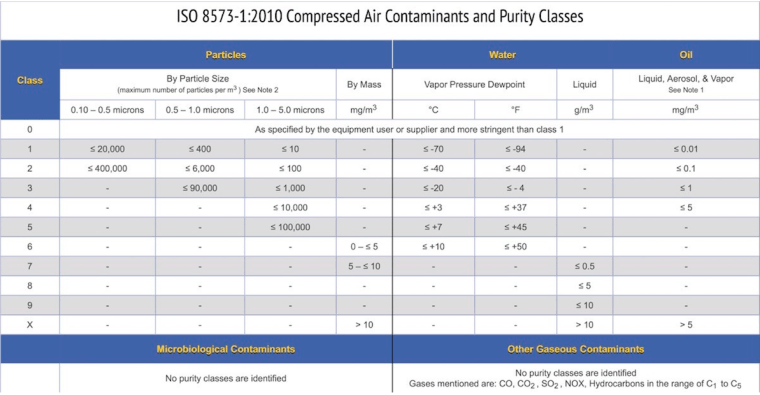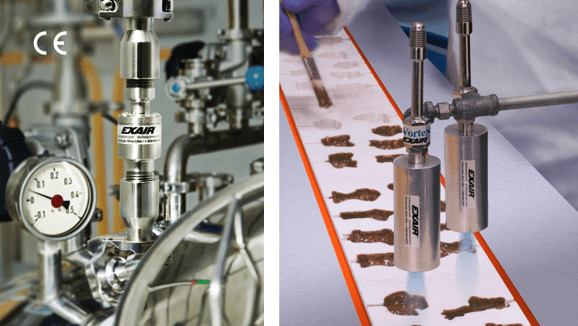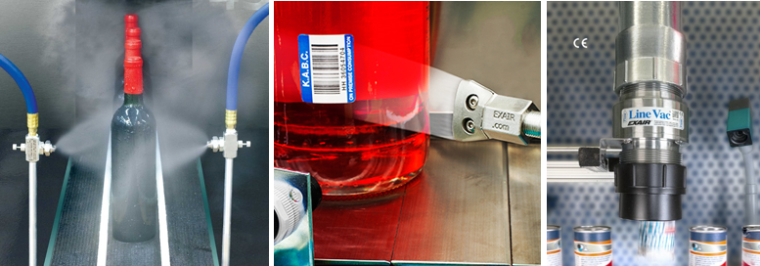The compressed air coming directly from your air compressor will usually require further treatment & preparation before it can be used. It’ll contain particulate matter, moisture, and hydrocarbons that the intake filter won’t remove…remember, it’s there to protect the compressor itself against damage from larger particulate. Smaller particulate and other contaminants that can affect air operated products & tools will still need to be addressed, after compression. The degree to which this additional treatment is necessary is dictated by what you’re using your compressed air for.
ISO 8573-1:2010 – Compressed air – Part 1: Contaminants and Purity Classes quantifies the quality of the air according to three properties, into different classes:

- Maximum particle size & concentration of solid contaminants. These can come from rust on the inside of the distribution piping, particulate generated by wear of air system components, and atmospheric contamination that the compressor’s intake filter doesn’t catch.
- Maximum pressure dew point. No matter where your compressor is located, the air it pulls in contains some amount of water vapor. Dew point is the temperature at which it will condense at a given pressure. As long as the compressed air temperature is above that dew point, there won’t be any water (in liquid form) in it.
- Maximum oil content. This most often is due to carryover from oil lubricated compressors, but can come from atmospheric oil (or other hydrocarbon) vapor drawn into the compressor’s intake.
So…what does this mean to you, relating to your use of compressed air? Well, it largely comes down to the nature of your application. Whatever is in your compressed air supply will be in contact with whatever the air comes in contact with. If a machinist is using a Safety Air Gun to blow chips & coolant from machined parts, they’re not going to be particularly concerned with this specification from a regulatory standpoint. If those parts are going straight from the machine shop to a paint booth, they’re certainly going to want to use air that’s free of particulate, moisture, and oil. All of those things will, quite noticeably, affect the quality of the painted finish. Filter Separators and Oil Removal Filters installed at the point of use will take care of that. A case could be made for a purity specification and regular testing of their compressed air, but this really just falls under the confines of good engineering practice.
Compressed air use in applications where it can come in contact with food or beverages intended for consumption (by people AND animals, according to the Federal Food, Drug, and Cosmetic Act) is considered a critical factor for cleanliness. They reference guidelines from the British Compressed Air Society (BCAS) to specify purity classes for both direct and indirect contact with food and beverage products:
Direct contact requires testing and compliance to Class 2:2:1 per the above table means:
- Particulate Class 2 – particle concentration, by particle size, in concentrations no greater than:
- 400,000 particles sized 0.1-0.5 microns, per cubic meter
- 6,000 particles sized 0.5-1.0 microns, per cubic meter
- 100 particles sizes 1.0-5.0 microns, per cubic meter
- Maximum pressure dew point Class 2 – vapor pressure dew point must be less than 40°F (40°C) at the maximum pressure of the compressed air system.
- Oil content Class 1 – concentration must be less that 0.001 milligrams per cubic meter
Examples of direct contact applicable to the use of EXAIR Engineered Compressed Air Products include blowing air for cooling, moisture removal, coating layer distribution, etc., of unpackaged food product.

Line Vac Air Operated Conveyors and Vortex Tubes are also used in direct contact applications in the food industry:

Indirect contact is slightly (but JUST slightly) less restrictive: those are Class 2.4.2. Particulate and oil content classes remain the same, but dew point can be as high as 37°F (3°C). This is where the air the air is coming into contact not with the consumable product itself, but, for example, the packaging or container:

EXAIR Corporation is committed to helping you get the most out of our products – and your compressed air system. If you have questions, I can talk about compressed air all day – and oftentimes I do! Let’s talk.
Russ Bowman, CCASS

Application Engineer
EXAIR Corporation
Visit us on the Web
Follow me on Twitter
Like us on Facebook
ISO 8573-1 Chart by Compressed Air Best Practice.